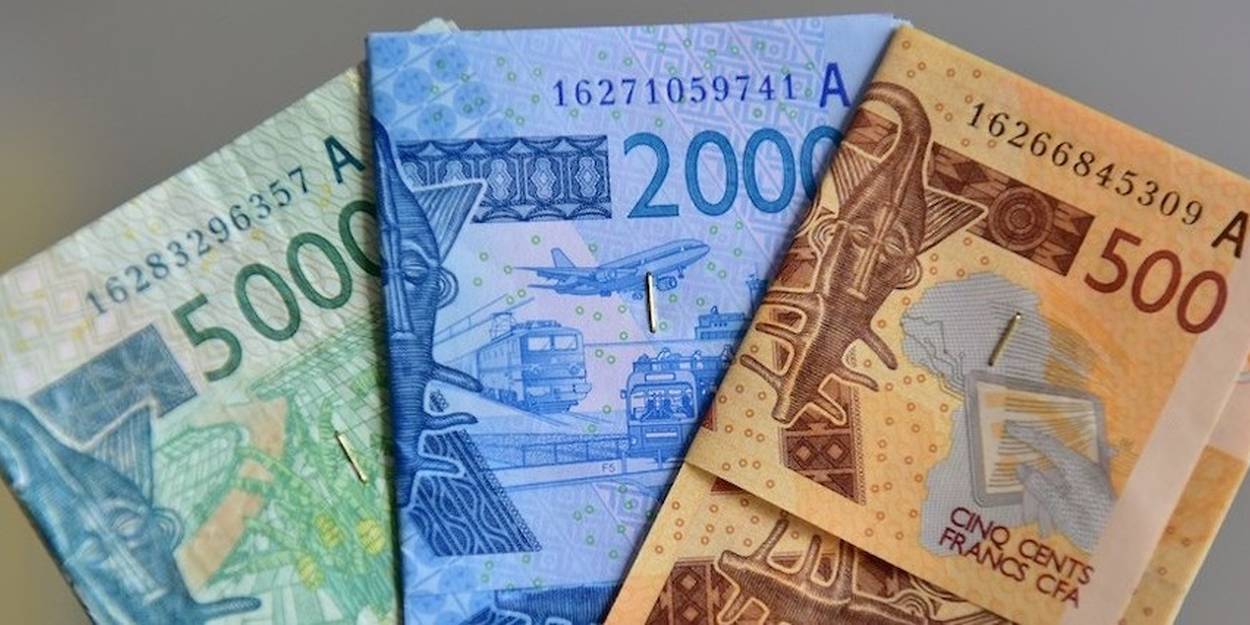How Togo Turned Borrowing into Fiscal Strategy
Togo’s debt mix is shifting fast — external debt now 41.1% of total, up from 28.3% in 2019, with 60% of new loans from IMF, World Bank, and AfDB. WAEMU bonds trade near 7.9%, while EMB ETF (NYSEARCA: EMB) spreads narrowed 70bps, signaling rising confidence in Lomé’s fiscal model.

Togo’s debt story is quietly entering a new phase. Once heavily reliant on non-Paris Club creditors, the country is now methodically reshaping its external portfolio—and the early results are beginning to show. According to the IMF’s 2024 review under the Extended Credit Facility (ECF), external debt accounts for around 40 percent of Togo’s total public debt, up from 28 percent in 2019. Beneath the headline lies a structural shift: concessional and multilateral loans are replacing opaque bilateral credit, extending maturities, and moderating borrowing costs across the curve.
This is not cosmetic diversification; it is fiscal engineering. Total public debt sits near 55 percent of GDP—low by regional standards, with Ghana near 78 percent and Sierra Leone above 70. But what distinguishes Togo is the quality of its financing. The share of commercial borrowing has stabilized at just under 2 percent of GDP, while multilateral institutions such as the IMF, World Bank, and African Development Bank (AfDB) now account for more than 60 percent of new external disbursements. That mix imports credibility from preferred-creditor lenders, effectively lowering the average cost of capital by about two percentage points compared to non-Paris Club sources that dominated a decade ago.
Markets have begun to notice. The spread on Togo’s secondary sovereign debt has tightened in line with the J.P. Morgan EM Bond Index (NYSEARCA: EMB), and neighboring WAEMU peers that pursued similar diversification—Benin and Côte d’Ivoire—saw Eurobond yields compress by roughly 70 basis points over the past six months. Investors are increasingly pricing diversification itself as a form of credit enhancement, viewing the quality of capital as no less critical than its quantity.
Togo’s medium-term debt strategy for 2025–2027, approved this year, aims to consolidate that advantage by keeping external borrowing ceilings intact while expanding access to the regional bond market through the UMOA-Titres platform. Maturities will gradually lengthen to 10 years, allowing Lomé to reduce rollover risk without heightening exposure to exchange-rate volatility. The CFA franc’s peg to the euro continues to shield Togo from the sharp devaluations seen elsewhere—Nigeria’s naira (USD/NGN ≈ 1,600) and Ghana’s cedi (USD/GHS ≈ 15.2) have both lost over 40 percent of value in two years—bolstering investor confidence in the country’s debt sustainability profile.
Still, diversification introduces its own fragility. The same success in attracting concessional and multilateral inflows raises contingent exposure to global policy cycles. Currency composition remains tilted: about 62 percent of Togo’s external obligations are euro-denominated, 23 percent in U.S. dollars, and the remainder in yuan and Special Drawing Rights. If the Dollar Index (DXY: DX-Y.NYB) stays above 105 and U.S. 10-year yields (US10Y: ^TNX) hover around 4.35 percent, local-currency servicing costs could rise even without new borrowing. Moreover, heavier reliance on multilateral financing increases exposure to conditionalities that can narrow fiscal flexibility during election cycles.
The regional contrasts are instructive. Benin has tapped the Eurobond market twice under World Bank-backed guarantee structures. Côte d’Ivoire remains more commercially exposed, with Eurobond stock near 25 percent of GDP. Ghana is still restructuring. Togo, by contrast, has opted for concessional prudence, avoiding high-yield markets and leveraging its stable macro fundamentals to secure cheaper, longer-dated credit. Within the West African Economic and Monetary Union, this makes Togo one of the bloc’s quiet fiscal outperformers—a country whose balance sheet, not rhetoric, signals discipline.
Yet the challenge ahead is sustainability. The IMF still classifies Togo as at a “moderate risk of debt distress,” with liquidity rather than solvency as the binding constraint. Maintaining concessional dominance will depend on policy continuity and transparency as global rates normalize and multilateral windows narrow. Budget reforms, credible project selection, and proactive investor communication will determine whether the country can continue to import concessional credibility without overreliance on it.
For investors, the risk-return calculus remains favorable. The WAEMU sovereign yield curve is shallow, and Togo’s 10-year domestic note trades near 7.6–8 percent, providing about 350 basis points of real yield after inflation—competitive against both regional and global peers. A small shift in concessional flows, however, could pressure domestic liquidity, forcing higher issuance costs on the UMOA-Titres market. That risk underscores why diversification is more than a comfort zone; it’s a breathing space that must be used to strengthen fiscal buffers before the next external shock.
Togo’s trajectory is therefore more than a national success story—it is a structural case study in composition as strategy. In a world where frontier borrowers are wrestling with refinancing cliffs and rising global yields, Lomé is proving that debt management is not only about who lends, but how lending is structured. By pivoting toward transparency, concessional capital, and domestic-market development, Togo is insulating itself from the contagion that has destabilized riskier peers.
It may not yet feature in the same conversation as Benin or Côte d’Ivoire among emerging-market traders, but the direction is unmistakable. As diversification deepens and fiscal discipline holds, Togo is gradually earning recognition as one of West Africa’s most credible sovereign credits—an economy whose quiet restructuring of debt composition may soon become a benchmark for resilience in the age of high global rates.





